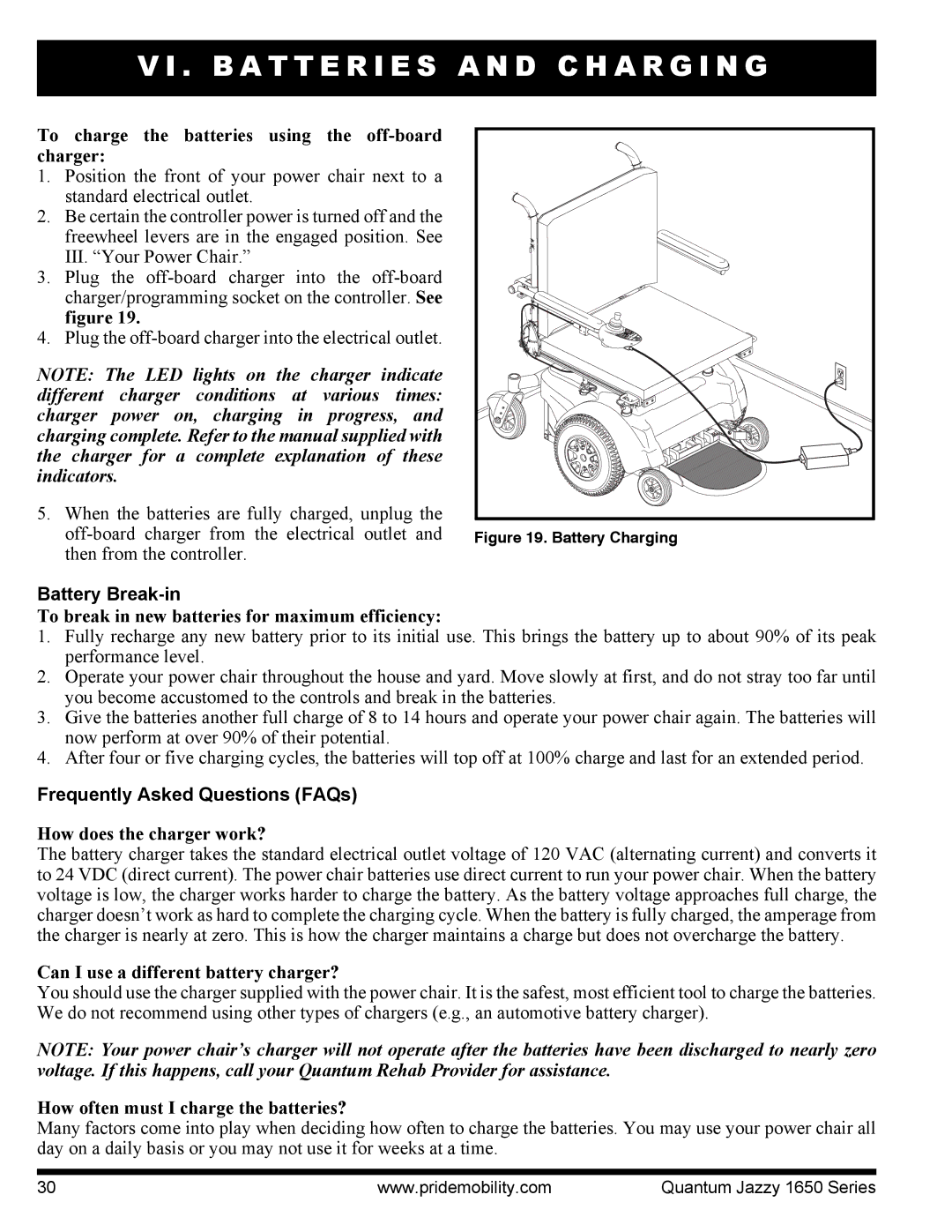Jazzy 1650 3EHD, Quantum 1650 3SPVHD, Jazzy 1650 2EHD, Quantum 1650 2SPVHD specifications
Pride Mobility has long been recognized as a leader in the field of mobility solutions, delivering products that enhance the quality of life for individuals with mobility challenges. Among its impressive lineup, the Jazzy and Quantum series stand out, particularly the Jazzy 1650 2EHD, Quantum 1650 2SPVHD, Quantum 1650 3SPVHD, and Jazzy 1650 3EHD models. Each of these powerchairs boasts innovative features and cutting-edge technology designed to ensure maximum comfort, safety, and maneuverability.The Jazzy 1650 2EHD is designed for heavy-duty use, equipped with a robust frame capable of supporting users with a weight capacity of up to 600 pounds. This model features Enhanced Dual Drive technology, providing superior power and performance for tackling diverse terrains. Equipped with advanced suspension, the Jazzy 1650 2EHD offers a remarkably smooth ride, minimizing discomfort over uneven surfaces.
Meanwhile, the Quantum 1650 2SPVHD model showcases superior engineering tailored for exceptional performance and versatility. It is equipped with a patented Mid-Wheel 6 technology that ensures optimal maneuverability, allowing users to navigate tight spaces with ease. With its high-performance motor and heavy-duty components, this powerchair offers an impressive range, making it suitable for both indoor and outdoor use.
The Quantum 1650 3SPVHD elevates the user experience with additional enhancements such as advanced electronics and programmable options. This model not only supports a weight capacity of 600 pounds but also features a 3-speed control system, allowing users to adjust their pace according to their environment. Its sophisticated seating system provides enhanced comfort and adjustability, ensuring personalized support for users with diverse needs.
Lastly, the Jazzy 1650 3EHD takes mobility to the next level with features designed for both durability and sophistication. With its ergonomic design and quality materials, the Jazzy 1650 3EHD ensures that users not only enjoy functionality but also aesthetic appeal. The heavy-duty construction combined with superior performance gives users confidence while navigating various settings.
In conclusion, the Pride Mobility Jazzy and Quantum series, particularly the Jazzy 1650 2EHD, Quantum 1650 2SPVHD, Quantum 1650 3SPVHD, and Jazzy 1650 3EHD models, reflect the commitment to innovation in mobility solutions. With their combination of advanced technology, robust design, and user-centric features, these powerchairs provide individuals with the freedom and independence to lead a fulfilling life.

